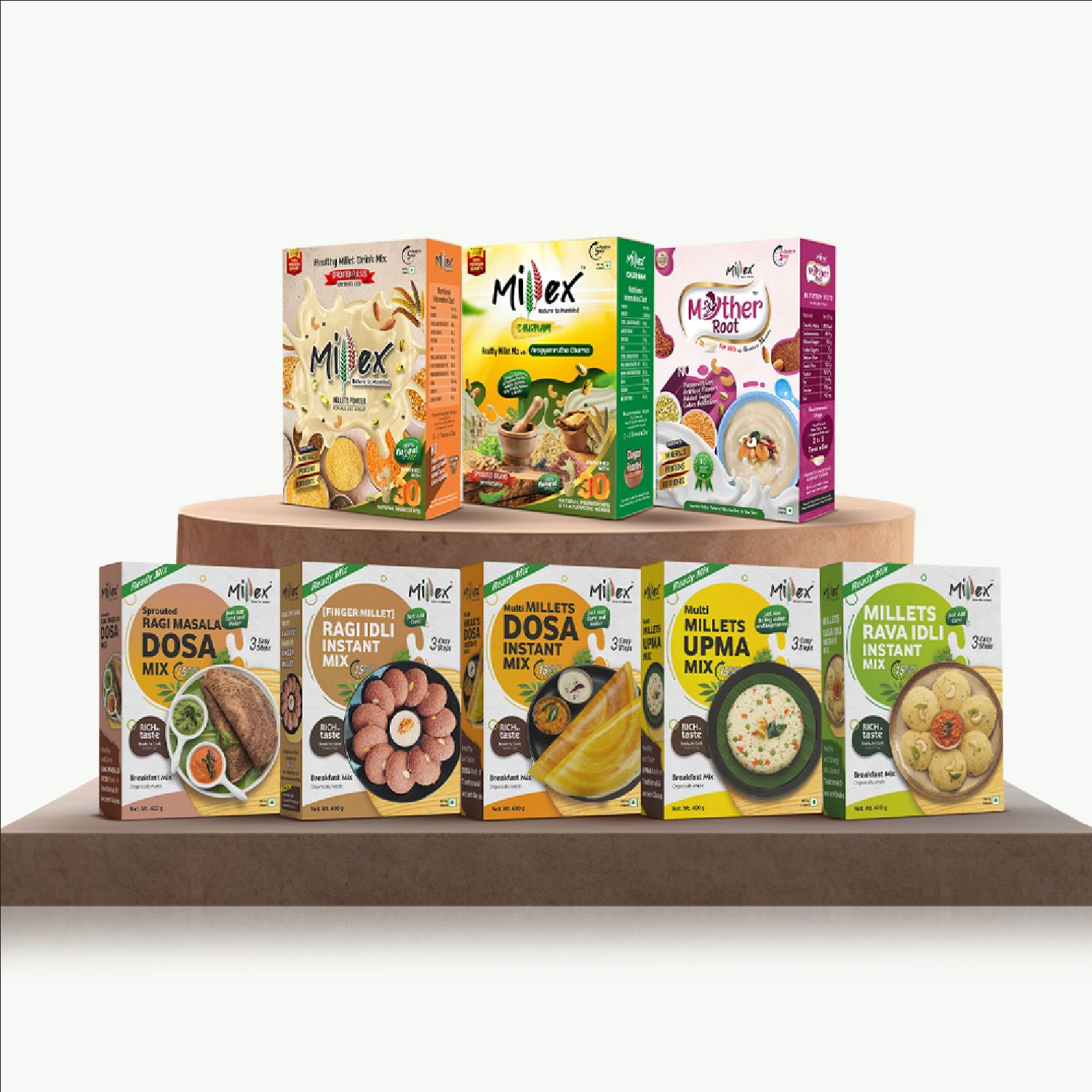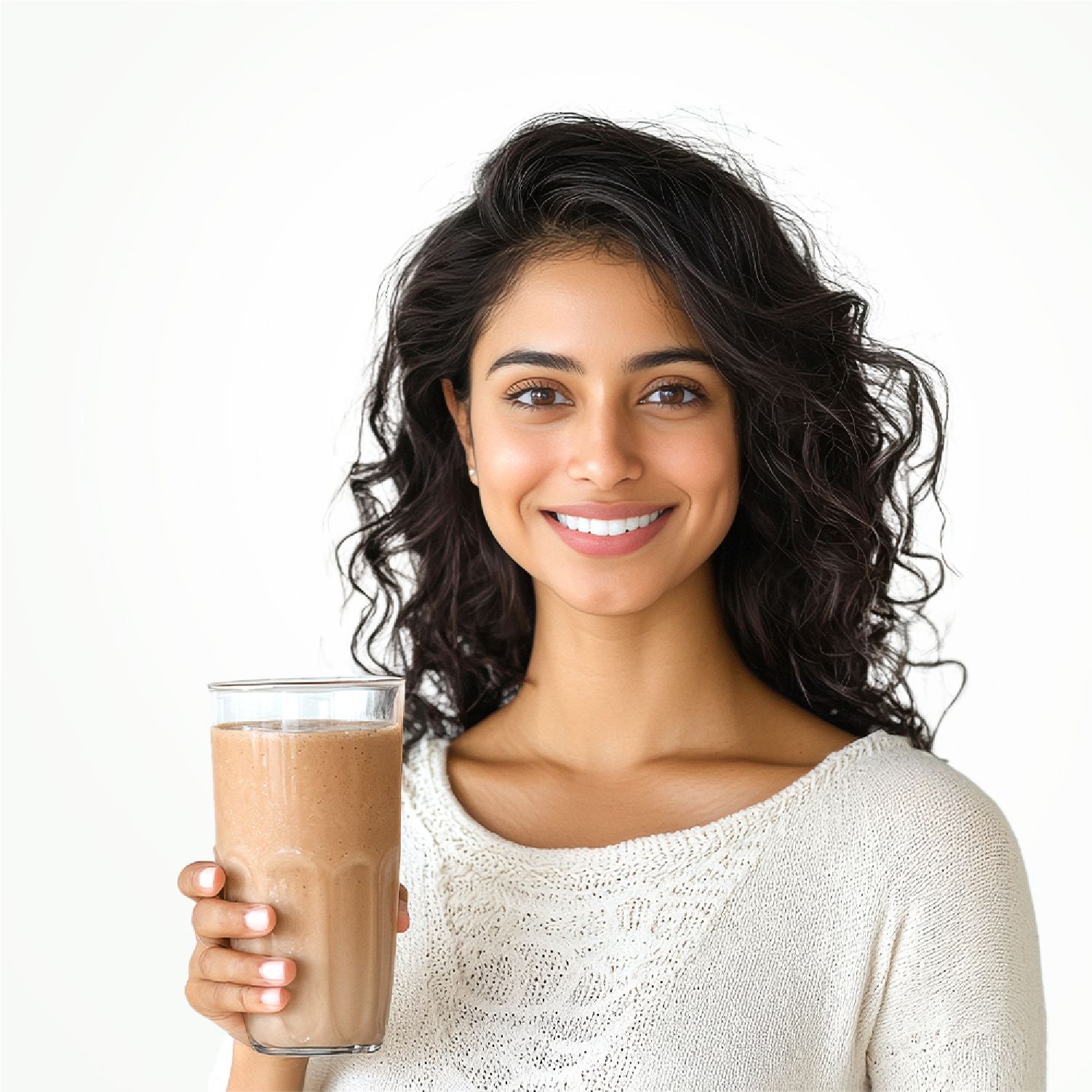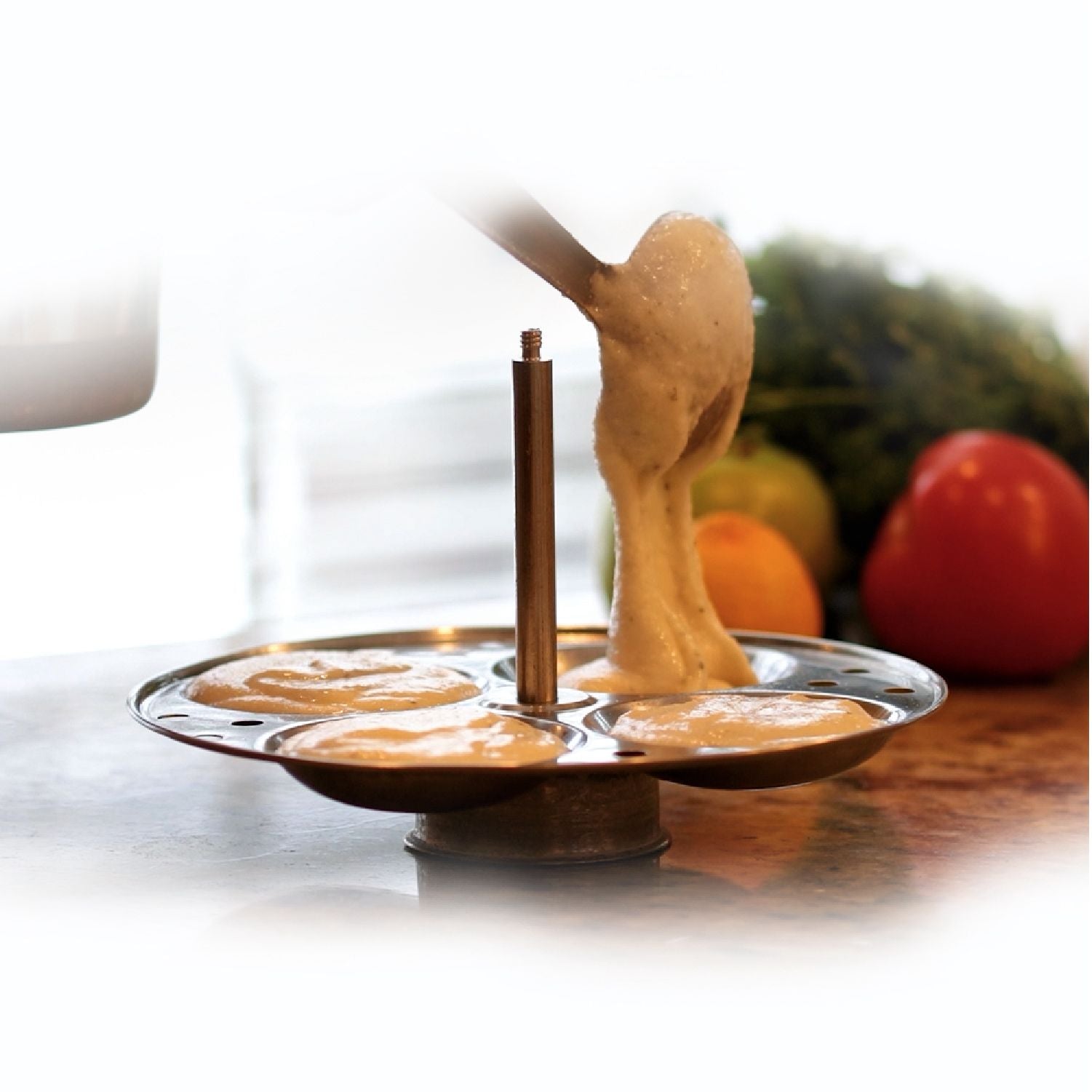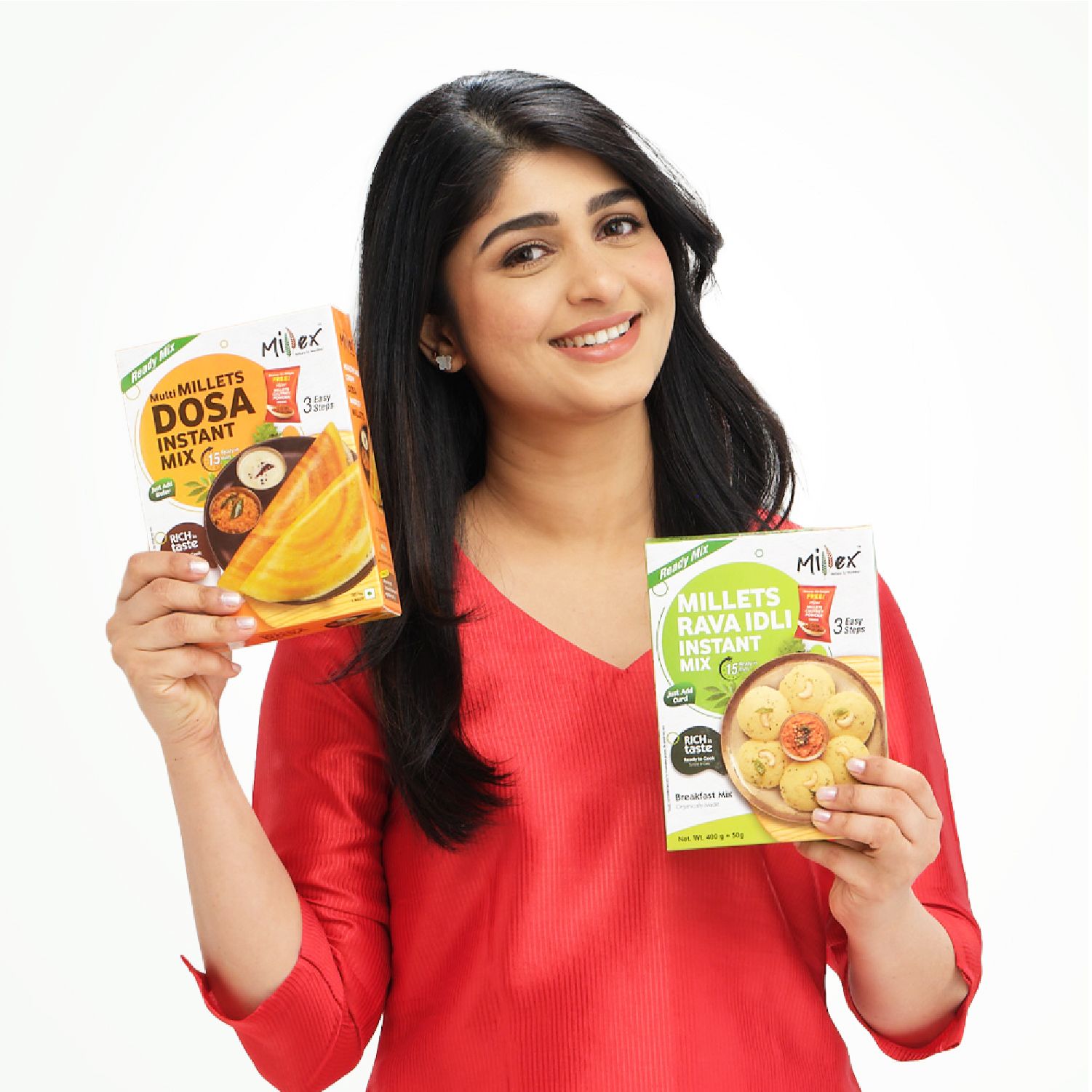Ragi is a powerhouse grain that supports children’s growth, bone health, digestion, and immunity. With Millex Ragi Idli Mix, parents can easily serve a nutrient-rich, tasty, and quick meal that kids will love perfect for building healthy habits early.
Children’s nutrition plays a significant role in their growth, immunity, and overall health. Adding nutritious foods that offer energy, vitamins, and minerals can create the basis for lifelong healthy behaviours. Parents tend to seek quick but healthy alternatives to provide kids with the best while not sacrificing flavour or variety.
Millex makes things easy with its ragi idli mix for kids, designed specifically to provide the nutrition of ragi in a quick and convenient preparation. It is rich in nutrients and supports strong bones, better digestion, and long-lasting energy for active young minds.

What is Ragi?
Ragi, also known as Eleusine coracana, is a small red brown millet commonly grown throughout Asian and African countries. It has been a staple grain in India for centuries, particularly in Southern states, due to its superior nutritional content and cooking versatility.
Ragi is equally suitable for a variety of meals, as sweet or savoury food. It contains a lot of calcium, iron, protein, and dietary fibre, making it a very good grain for vegetarians to eat. Its nutritious, balanced content makes it promote growth, bone formation, and overall health in kids.
Nutritional Profile of Ragi
Ragi offers a complete profile of micronutrients. Here’s the nutritional information of ragi presented in a clear tabular format.
|
Nutrient |
Amount per 100g |
Benefit/Note |
|
Energy |
328 Kcal |
Provides energy for growth and activity |
|
Protein |
7.3 g |
Supports muscle and tissue development |
|
Carbohydrates |
72 g |
Source of energy |
|
Fat |
1.3 g |
Low fat content, heart-friendly |
|
Dietary Fibre |
11.5 g |
Aids digestion and satiety |
|
Iron |
3.9 mg |
Supports haemoglobin and blood health |
|
Sodium |
11 mg |
Low sodium, heart-friendly |
|
Calcium |
344 mg |
Builds strong bones and teeth |
|
Potassium |
408 mg |
Maintains fluid balance and nerve function |
|
Carotene |
42 μg |
Supports vision and skin health |
|
Vitamin C |
- |
Boosts immunity |
|
Vitamin E |
- |
Antioxidant, supports skin and hair |
|
B-complex vitamins |
- |
Supports metabolism and energy production |
|
Magnesium |
- |
Helps in bone and nerve health |
|
Phosphorous |
- |
Important for bones and teeth |
This table organises both macronutrients and micronutrients, highlighting the benefits of ragi nutrition for children growth and overall health.
Benefits of Ragi for Children
1. Versatile Ingredient for Every Meal
The taste and texture of Ragi are such that it can be used for a variety of dishes. Parents have the freedom to use it for sweet puddings, savoury pancakes, fermented idlis, or dosas. It can be prepared as conventional foods such as ragi muddle, blended with badam milk, or added to baked foods.
Its flexibility ensures children are served healthy food without any restriction, allowing parents to stick with a regular intake of necessary nutrients in their meals. The flexibility enables ragu to be integrated into snacks and full meals without any difficulty.
2. Contributes to Strong Bones
Ragi contains 344 mg of calcium per 100 grams, well beyond the levels found in most other cereals and milk products. Proper calcium consumption is important for children to achieve healthy bones and teeth.
Using ragi on a daily basis enables children to achieve their daily calcium requirements, minimising the chances of bone-related complications such as fractures or osteoporosis in the future. Mixing ragi with milk yoghurt, or other calcium-containing ingredients, optimises absorption and achieves maximum skeletal development.
3. Protein Source for Growth
Protein is required for muscle growth, repair of tissues, and overall growth. Ragi has 7.2 grams of protein per 100 grams, similar to cereals like barley or wheat. It is free from gluten, which is useful for children suffering from gluten intolerance.
The addition of ragi in kids’ diet offers a consistent plant protein source, especially relevant in vegetarian families. Its protein value helps meet the daily growth needs, maintains energy levels, and provides balanced nutrition for active children.
4. Rich in Fibre
Ragi is rich in dietary fibre, primarily in the bran layer, which is preserved in whole-grain foods. Fibre ensures healthy digestion, keeps one full for longer periods, and maintains bowel movements.
The addition of fibre-rich ragi to kids’ diet prevents overeating, ensures gut health, and may prevent obesity. Fibre also helps naturally decrease cholesterol levels. This helps kids get both the physical well-being of fibre and enhanced digestion, leading to overall wellness.
5. Encourages Relaxation and Improved Sleep
Ragi contains amino acids such as tryptophan, which the body can transform into serotonin and melatonin. These two natural substances facilitate relaxation and regulate sleep.

Intake of a meal or snack containing ragi in the evening relaxes children, enhances the quality of sleep, and improves their overall mood. Sleep is essential for growth, proper functioning of the mind, and emotional balance, so ragi becomes a perfect food supplement to ensure healthy sleep patterns.
6. Easily Digestible for Infants and Toddlers
Ragi is gentle on young digestive systems and can be included in early weaning foods. Its soft texture and mild flavour make it suitable for porridge, malt drinks, or soft pancakes.
Nutrients like calcium, protein, and urin are easily absorbed, supporting the development of bones, muscle and blood. Introducing ragi gradually helps babies adapt to solid foods while receiving essential nutrition in a digestible form.
7. Simple to Prepare
Ragi can be prepared as porridge, dosas, idlis, or blended with oats and rava. Basic preparations involve a few ingredients, so it is easily accessible to busy parents.
Versatility means rapid modification for every meal without sacrificing nutritional content. Available ready-to-cook ragi flour and blends ease preparation while preserving nutrient values, providing a convenient and reliable way of providing children with healthy meals.
How to Introduce Ragi to a Child’s Diet
● Ragi Porridge
Combine 2 tablespoons of ragi flour with ½ cup of water or milk. Heat on low heat for 5-7 minutes and stir continuously to avoid lumps. Add mashed banana or jaggery powder for kids above one year. The porridge has a balanced combination of energy, protein and fibre, hence a healthy meal during breakfast or as a snack in the evening.
● Ragi Malt
Ragi malt is an energy-boosting drink that may be served as a snack or with meals. It provides vital nutrients such as calcium, protein, and iron without weighing heavily in the stomach.
● Ragi Pancakes
Soft ragi flour pancakes may be served with fruits or yoghurt. Ragi pancakes put together protein, fibre, and essential minerals while exposing children to different textures and flavours.
● Ragi Idli and Dosa
Fermented ragi idlis and dosas enhance digestibility and gut health because of their probiotic nature. Ragi idlis and dosas are great for breakfast or snacks and can be accompanied by lentils or vegetables for extra nutrition.
● Ragi Cookies
Home-made ragi cookies offer the health benefits of ragi for kids, a superior alternative to traditional snacks. They contain fibre and protein, which maintain satiety and energy. These are great for mid-day snacks or packed lunches.
Preparing Ragi for Kids
1. Simple Ragi Porridge
Mix 2 tablespoons of ragi flour with half a cup of milk or water. Boil on low heat for 5-7 minutes, stirring well. Feed after cooling down a bit. Naturally sweeten with mashed banana or jaggery for children above one year.
2. Sprouted Ragi Powder
Soak the whole ragi overnight. Let it sprout for 1-2 days, sun-dry and grind into fine powder. This improves nutrient availability and digestibility. Sprouted ragi powder can be used as porridge, pancakes, or mash, offering an easy-to-digest, nutrient-rich food for infants and toddlers.

Ragi Dosa Mix
Gradual introduction of ragi in various forms makes children accept its taste and texture and achieve maximum nutrition. Alternating porridge, malt, pancakes, and idlis keeps food exciting and varied.
Ragi-Based Food Recipes
1. Classic Ragi Porridge
Ingredients: 2 tablespoons ragi flour, 1 cup water or milk, ½ teaspoon ghee (optional), mashed banana or jaggery.
Instructions: Combine ragi flour and water to make a smooth paste. Cook over slow heat, stirring to prevent lumps. Add ghee for texture and taste. Sweeten naturally and serve warm for the best millet breakfast for kids. Good for babies 6+ months.
2. Ragi and Moong Dal Khichdi
Ingredients: 2 tsp ragi flour, 1 tsp moong dal, ½ cup water, pinch of cumin powder (optional)
Instructions: Boil moong dal until soft. Mix the ragi flour and stir well. Cook until thickened. Cool slightly. Suitable for babies 8+ months, offering protein-rich nutrition in a soft, easily digestible form.
Millex: Nourishing Young Minds with the Power of Ragi!
Ragi is one such powerhouse of nutrients that nurtures the growth of children, their bones, digestion, and immunity. Its versatility allows it to be transformed into wholesome breakfasts, snacks, and meals that kids enjoy, making nutrition effortless for parents.
Millex brings this goodness to your kitchen with its Ragi Idli Instant Mix, Sprouted Ragi Masala Dosa mix and various growth-supporting foods for children, making it easier than ever to serve a nutrient-packed meal in minutes. Trust Millex to provide high-quality, healthy, and convenient ragi-based options for your family. Check out our products today and offer your kids the gift of healthy bones and balanced nutrition.
1. Is ragi good for children?
Yes, ragi is packed with calcium, iron, and protein that support bone strength, growth, and immunity in children.
2. At what age can I introduce ragi to my baby?
Ragi can be introduced after 6 months as a porridge or malt, once the baby starts semi-solid foods.
3. How does ragi help in bone development?
Ragi is one of the richest plant sources of calcium, essential for strong bones and teeth.
4. Is ragi easy to digest for kids?
Yes, ragi is gentle on the stomach and easily digestible, making it suitable for babies and toddlers.
5. Can ragi help improve sleep in children?
Yes, ragi contains tryptophan, which helps the body produce serotonin and melatonin, promoting better sleep.
6. How can I include ragi in my child’s diet?
You can make ragi porridge, idlis, dosas, pancakes, or cookies for variety and nutrition.
7. Is ragi suitable for kids with gluten intolerance?
Yes, ragi is naturally gluten-free, making it a safe option for kids with gluten sensitivity.
8. Does ragi help in digestion?
Absolutely. Its high fibre content supports smooth digestion and helps prevent constipation.
9. Is sprouted ragi better than regular ragi?
Yes, sprouting enhances nutrient absorption and makes ragi even more digestible for kids.
10. Why choose Millex Ragi Idli Mix for kids?
Millex offers a quick, easy, and nutrient-rich ragi mix that supports growth, immunity, and energy without compromising taste.





